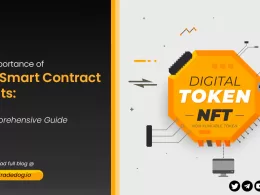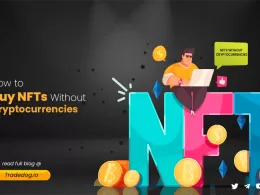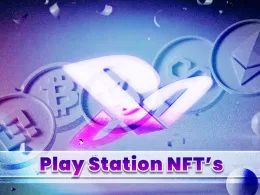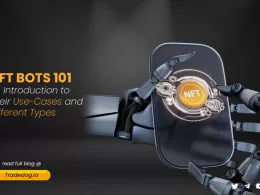Quick Links
The newest innovation sweeping up Bitcoin is called ordinals. Ordinal NFTs, introduced on January 20, 2023, by developer Casey Rodarmor, are merely the most recent method of producing NFTs on the Bitcoin mainnet. Even though NFTs on Bitcoin are not a new concept, with layer two networks like Counterparty and Stacks on top of Bitcoin already enabling Bitcoin-based NFTs, ordinal NFTs feature a fundamentally different architecture from other Bitcoin NFTs.
Since its launch in January’21, more than 640,000 Ordinals have been minted by a growing community of developers, users, and enthusiasts. Let’s study what exactly ordinal NFTs are, how they work, and why they differ from other NFTs.
Ordinal Theory and Inscriptions
Ordinals are the means to create Bitcoin NFTs on the base Bitcoin blockchain by attaching data like images, videos, and more to an individual satoshi. Ordinal NFTs do not exist on a separate layer from Bitcoin; instead, they use a logical ordering system called ordinal theory, giving each Bitcoin satoshi a unique number.
Thus, ordinal NFTs are completely Bitcoin-native. They work without changes to the Bitcoin protocol, do not need any extra layers, and are backwards compatible with the network.
The History of Ordinal NFTs
However, ordinal NFTs known today were only made possible by the Segregated Witness (SegWit) and Taproot update to the Bitcoin Protocol in 2017 and 2021, respectively.
SegWit created the foundation for Layer 2 payment channels like the Bitcoin Lightning Network and solved several problems in Bitcoin Core, allowing more transactions per block. SegWit sparked an explosive debate among the Bitcoin community, resulting in a hard fork of the network that gave rise to Bitcoin Cash and Bitcoin Satoshi’s Vision, also known as Bitcoin SV.
With Taproot, all participants in a transaction can work together to make these complicated transactions appear to be routine, person-to-person exchanges. They accomplish this by fusing their signatures to produce a new signature and their public keys to create a new public key. This is accomplished using a tool called Schnorr signatures.
Additionally, the Taproot upgrade muddles transactions with single and multiple signatures, making it harder to distinguish transaction inputs on the blockchain of Bitcoin. By enhancing anonymity while minimizing the data required to create it, Taproot lowers transaction costs, which have increased significantly as Bitcoin has gained more popularity.
Ordinals Pros and Cons
Pros of Bitcoin Ordinals
Bringing Non-Fungible Tokens (NFTs) to the Bitcoin blockchain has evidenced the multi-purpose utility of the Bitcoin network. This initiative has provided an opportunity to transcend the peer-to-peer payment system that Bitcoin is commonly known for and unlock new functionalities, such as NFT creation. A consequential effect of these additional use cases is the potential for an expanded network of users. For miners, Bitcoin Ordinals represent a fortuitous development, rivalling only the advent of Bitcoin itself in terms of significance.
A key attribute of Bitcoin NFTs is that they are fully integrated into the Bitcoin network. Unlike other networks, NFT files on smart contracts are stored off-chain, rendering them more vulnerable to security breaches and not wholly immutable. The secure, persistent and immutable nature of Bitcoin NFTs on-chain is an advantageous feature that distinguishes Bitcoin from other networks.
Moreover, implementing NFTs on the Bitcoin network has piqued the interest of potential new users. This effect is irrefutable and has already attracted many users to Bitcoin.
Cons of Bitcoin Ordinals
Bitcoin enthusiasts maintain that the cryptocurrency was exclusively designed as a decentralized alternative to fiat currencies solely for peer-to-peer transactions. Thus, they argue that the existence of Bitcoin NFTs is not in line with its original purpose.
Several potential drawbacks are associated with Bitcoin NFTs, including increased financial transaction costs. The adoption of Bitcoin Ordinals has led to a significant rise in Bitcoin transaction fees, undermining the currency’s affordability as a means of payment.
Furthermore, the use of Ordinals has challenged the concept of anonymity in Bitcoin. By creating a serial number for satoshis and linking them to additional data, Ordinals may compromise a user’s identity online.
The fungibility of Bitcoin has also been called into question by the use of Inscriptions and Ordinals. NFTs, by nature, are non-fungible, which has led some to argue that Bitcoin’s fungibility is threatened. Inscriptions on a single satoshi have made it so that not all satoshis are viewed as equal, a hallmark of fungibility. Ordinal satoshis, which can have inscribed text or images, are considered unique and non-fungible tokens.
How Are Bitcoin Ordinals Different from NFTs?
Bitcoin Ordinals and NFTs have some similarities, but they are fundamentally different. Let’s look at what these technologies have in common and what sets them apart.
- Bitcoin Ordinals and NFTs are non-fungible and associated with digital art, but there are key differences. Ordinals exist only on-chain and are immutable, meaning they cannot be altered in any way. Similar to BTC coins, Ordinals can be minted directly onto the chain.
- In contrast, NFTs may only sometimes be immutable and can also exist off-chain.
- Moreover, Ordinals do not have separate metadata files like Ethereum-based NFTs. In an Ethereum-based NFT, the metadata file contains a link to the content the NFT represents, displays proof of ownership, and references the content, such as an image, video, or sound file. However, in Ordinals, this file is stored within the witness signature field of the Bitcoin Satoshi transaction instead of being stored separately.
- This design can be advantageous as NFTs risk losing the file reference in case of system malfunction. For instance, if the storage platform used for the metadata file experiences an outage, the token can no longer reference it, resulting in the loss of description, proof of ownership, etc.
How to create Bitcoin ordinals?
Steps towards the production of a Bitcoin ordinal (also known as a Bitcoin NFT) require a strategic approach:
Step 1: To begin with, selecting the type of inscription one desires to fashion is imperative. It is noteworthy that the material will persist on the blockchain for eternity. One may upload a file, an image, text, or even experimental fungible tokens such as BRC-20.
Step 2: After the desired inscription has been chosen, the file or image must be uploaded, then selecting an appropriate fee. It is essential to remember that the larger the file size, the higher the fee, and a lower fee would translate to a more extended period for the Bitcoin NFT to be created.
Step 3: Upon confirming the fee, one must click “Pay & Inscribe,” leading to generating a QR code with a payment address. Next, payment must be completed to cover the minting fees, and after payment, one must wait for one block confirmation, which should take a few minutes.
Step 4: To receive the inscription, one may add the Bitcoin wallet address of their choice.
Step 5: Finally, after the inscription is complete, the unique identification code can be copied and pasted into the website https://ordinals.com/ to display it. This platform functions as a Bitcoin inscription explorer.
Congratulations! The creation of your initial Bitcoin Inscription is now complete!
The Most Notable Ordinals inscriptions
The utilization of ordinals has been progressively gaining popularity within the blockchain and cryptocurrency industry. These ordinals are unique digital assets representing ownership or involvement within a particular platform or network. Notable examples of these ordinals include Punks, Taproot Wizards, OnChainMonkey, TwelveFold, and Degods.
Punks
Punks are arguably the most well-known ordinals and were initially introduced by Larva Labs in 2017. They are an assemblage of 10,000 distinct 8-bit characters generated randomly and sold as NFTs on the Ethereum blockchain. Punks have acquired an enormous following and have come to symbolize the early days of blockchain and the potential of NFTs.
Taproot Wizards
Taproot Wizards are another exceptional ordinal that was created in 2021. They are a set of 32 limited edition NFTs designed to commemorate the implementation of the Taproot upgrade on the Bitcoin network. The Taproot upgrade is one of the most significant advancements to the Bitcoin network in recent years. It is anticipated to improve privacy, security, and efficiency substantially.
OnChainMonkey
OnChainMonkey is yet another popular ordinal that was introduced in 2021. It is a collection of 10,000 unique monkey-themed NFTs created to signify ownership within the OnChainMonkey ecosystem. Each monkey possesses individuality, history, and qualities, making them exceedingly collectible and desirable.
TwelveFold
TwelveFold is a distinctive ordinal that was introduced in 2021. It is an assemblage of 12 NFTs created to represent the 12 zodiac signs. Each NFT was developed to symbolize each zodiac sign’s unique attributes and characteristics and is highly desirable among astrology enthusiasts and collectors.
Degods
Degods is yet another notable ordinal that was introduced in 2021. It is a collection of 10,000 unique NFTs created to represent ownership within the Degods ecosystem. Each NFT is distinct and represents a different deity, making them exceedingly collectible and sought after.
Conclusion
Thus, Bitcoin Ordinals are a special kind of digital asset that you can make and check using the Bitcoin system. They’re becoming more popular as the Bitcoin system improves. Some intelligent people are working on making it easy for everyone to create and handle Bitcoin Ordinals. This new tech might change our thoughts about owning and moving digital stuff.









